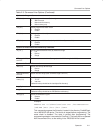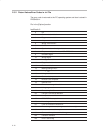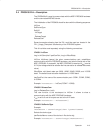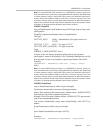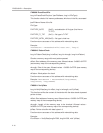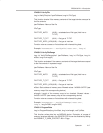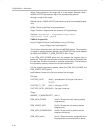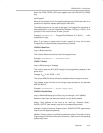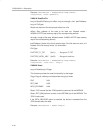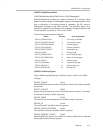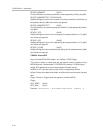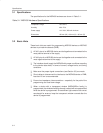
PRGS430.DLL—Description
2-19
Operation
Note: Use PGM_ERASE_INFO only together with the PGM_WITH_ERASE
flag.
lpszProjectIni
Name of the {project}.ini file, if protection settings from this file are used. If no
protection is required, replace lpszProjectIni with NULL.
The added features do not need to be used—for ProgramFile according to
older specification, just call ProgramFile(FileName, FileType, 0, NULL); if no
{project}.ini file or erase check is used, just call:
Example: lFuncReturn = ProgramFile(FileName, 0, 0, NULL); // with
autodetect file type
Note: If an erase or erase-check function reports an error, the function
ProgramFile() is aborted before programming is started.
/FN0016/ BlowFuse
long int BlowFuse(void)
This function blows the security fuse of the target device.
Example: lFuncReturn = BlowFuse(void)
/FN0017/ SetVcc
long int SetVcc(long int iVoltage)
This function sets the VCC_MSP voltage of the programming adapter to the
given value.
iVoltage: V
CC
in mV. (3000 −> 3 V)
The correct MSP430 device should be selected before using this function.
The voltage range is limited to the voltage range allowed for the selected
MSP430 device.
Example: lFuncReturn = SetVcc(Long:3000)
/FN0018/ ReadOutData
long int ReadOutData(long int wStart, long int wLength, void* lpBuffer)
Reads out data from the device and writes it to the buffer passed
wStart: Start address of the area to be read out. Allowed values :
0x0000−0xFFFE (see memory map for the corresponding device)
wLength: Length of the area. Allowed values : 0x0000−0xFFFE (see memory
map for the corresponding device)
lpBuffer: Pointer points to a buffer that receives the data. The buffer must be
large enough to hold the entire data; otherwise, a fatal error of the operating
system may occur.



